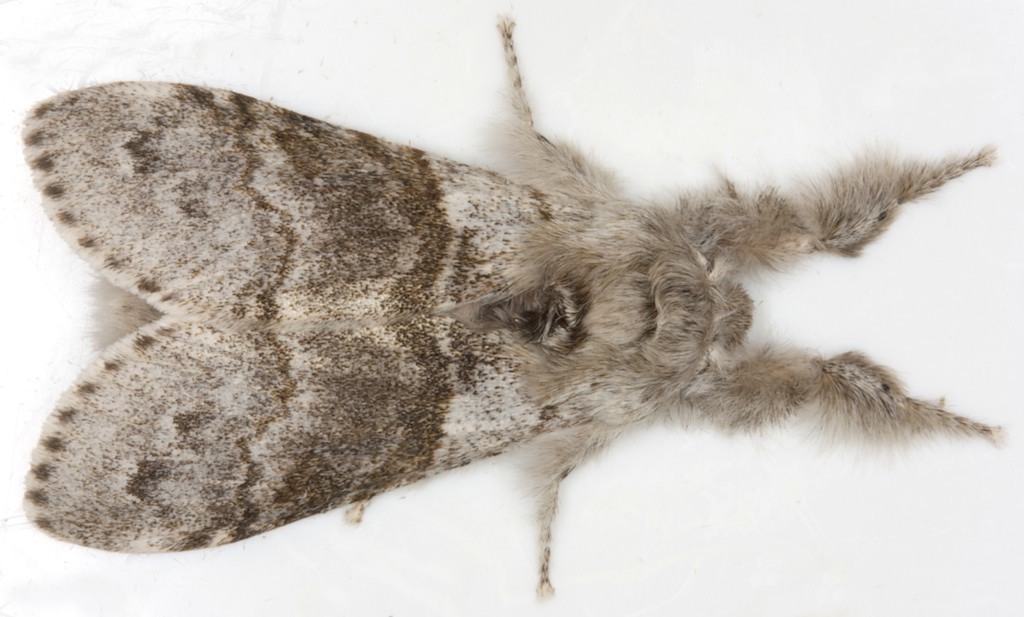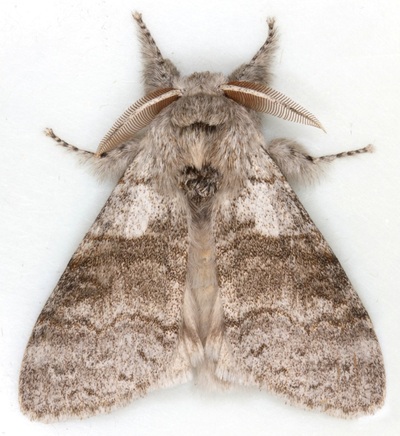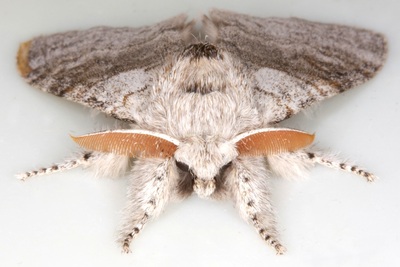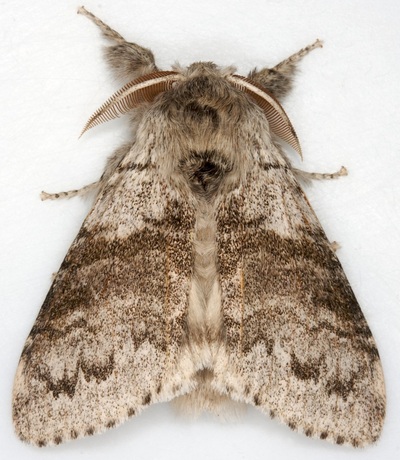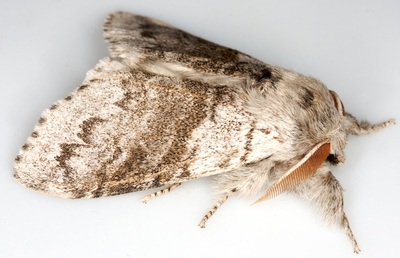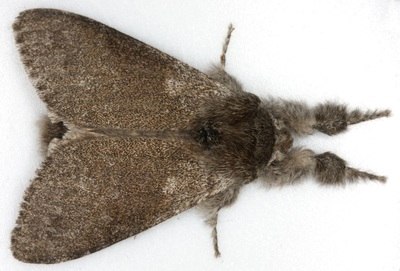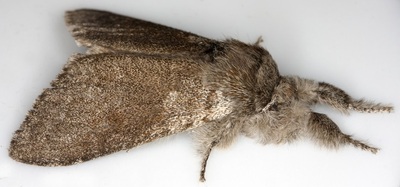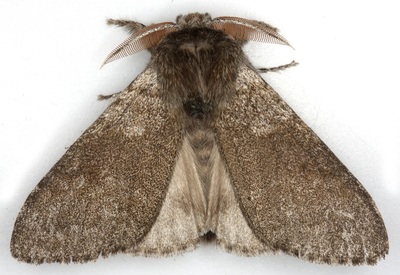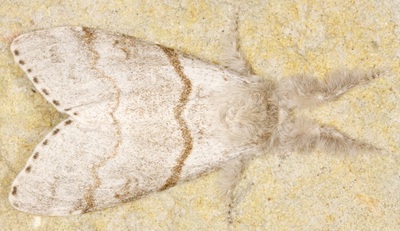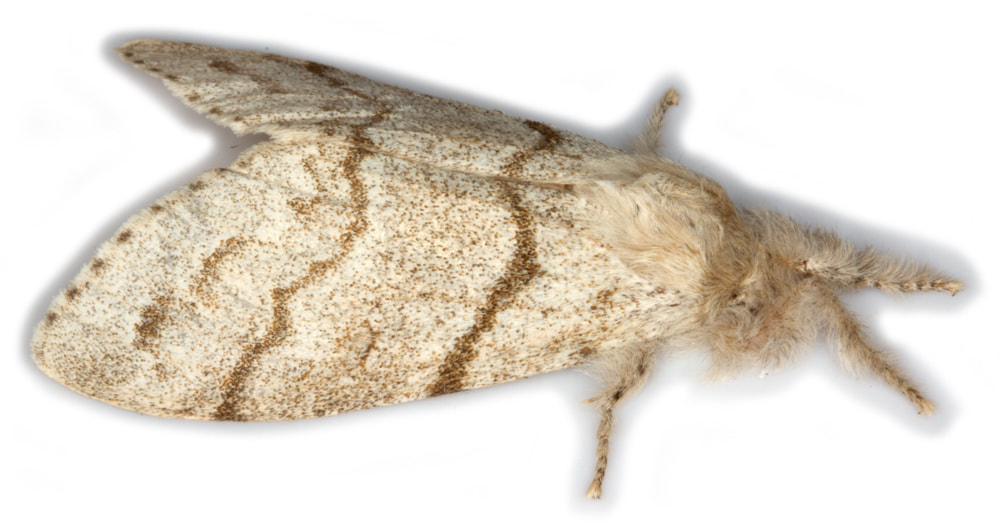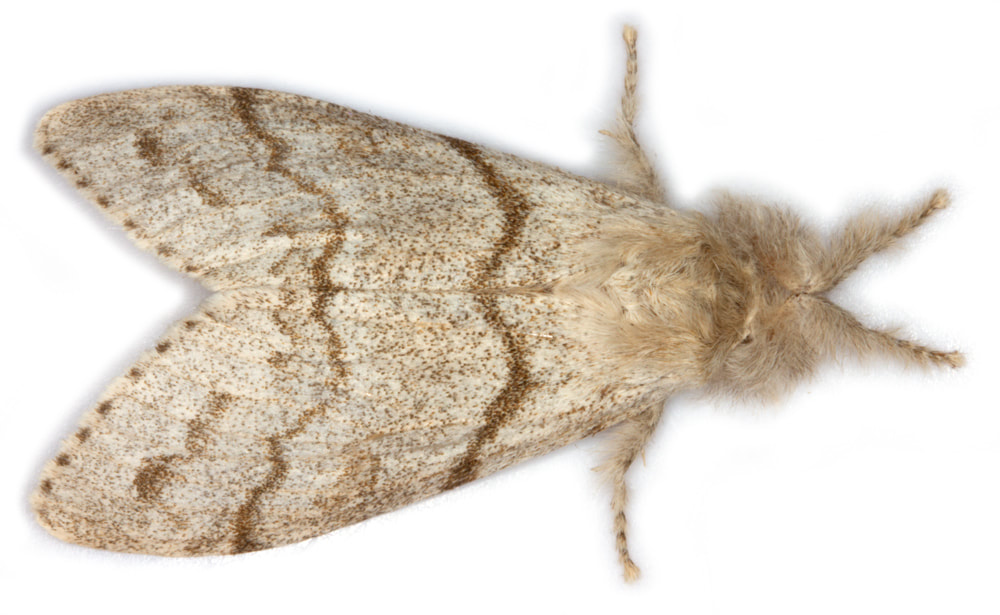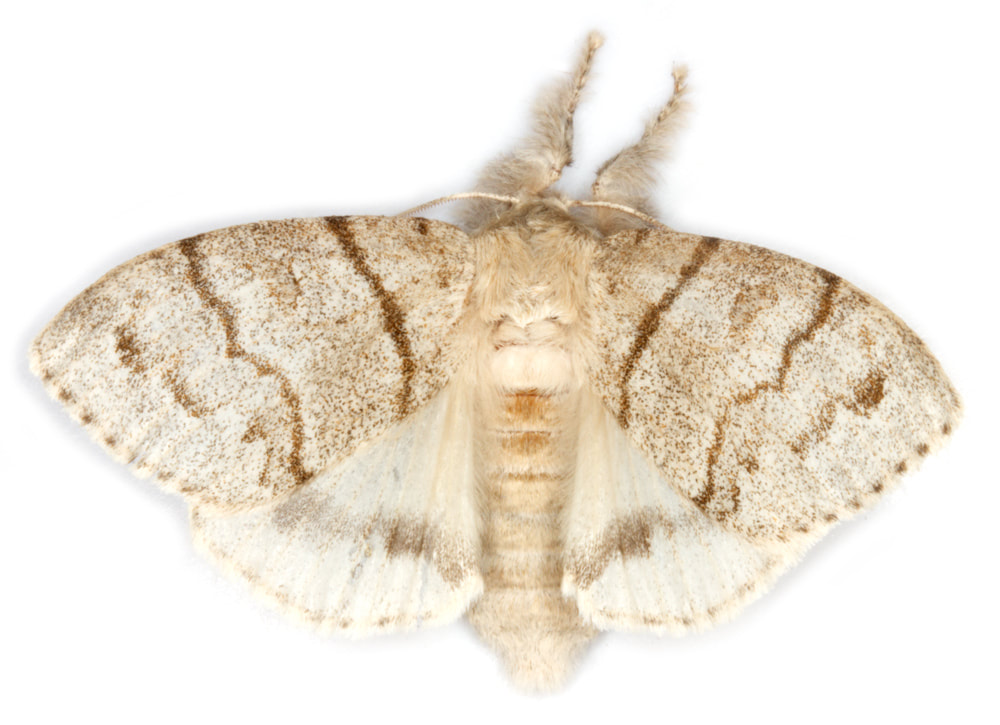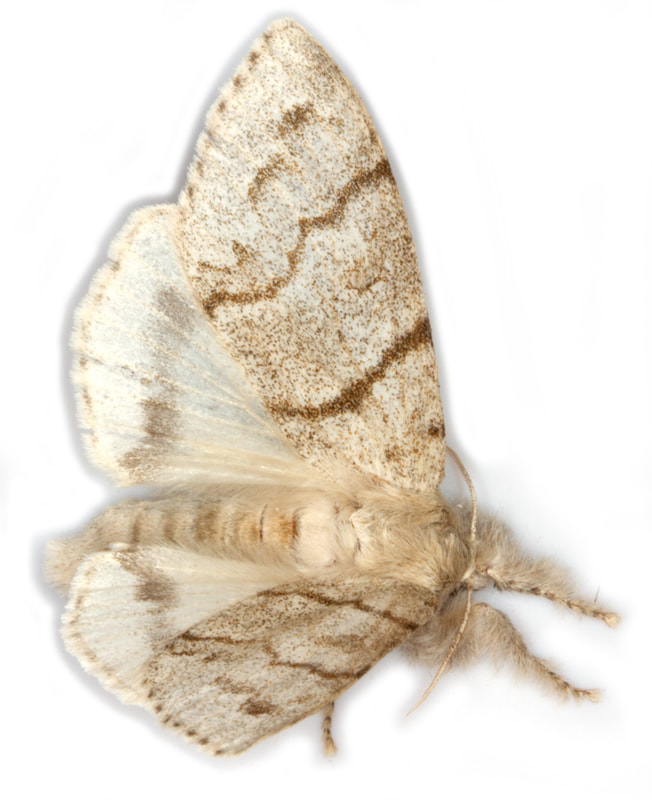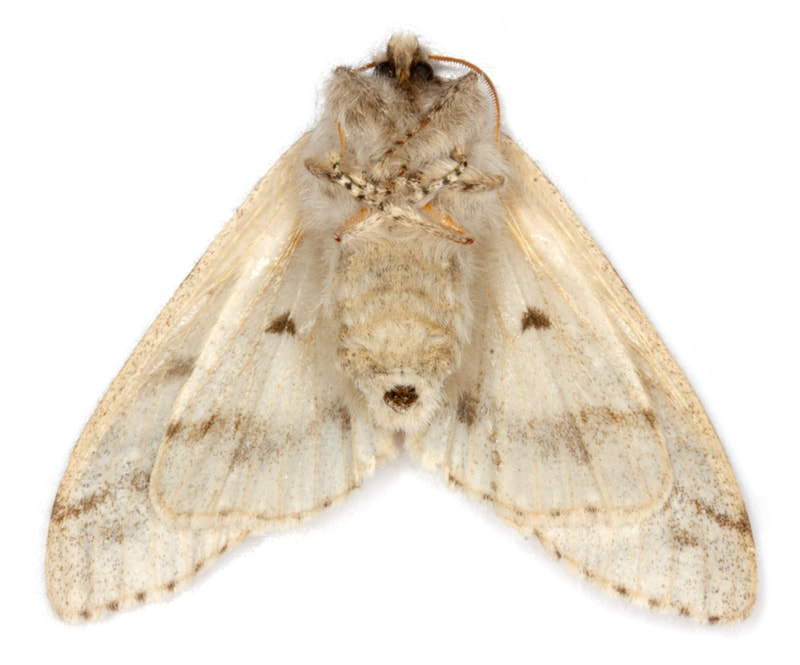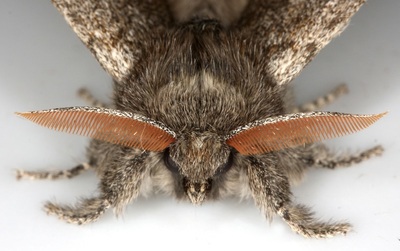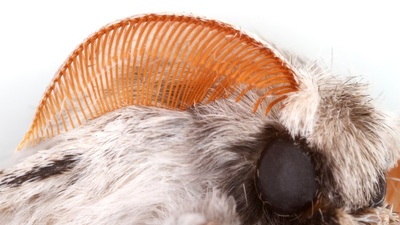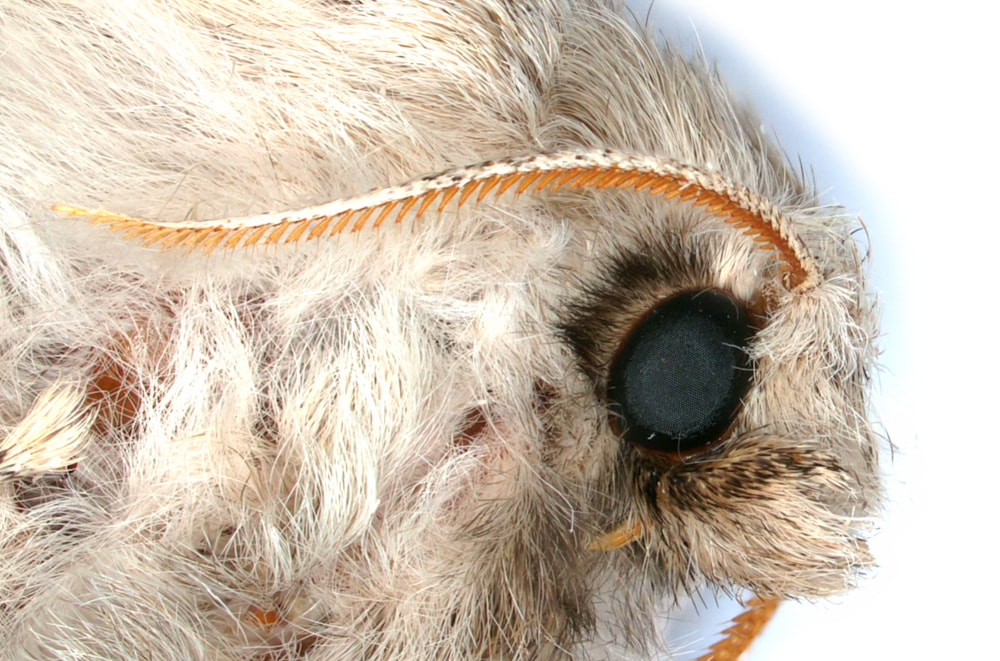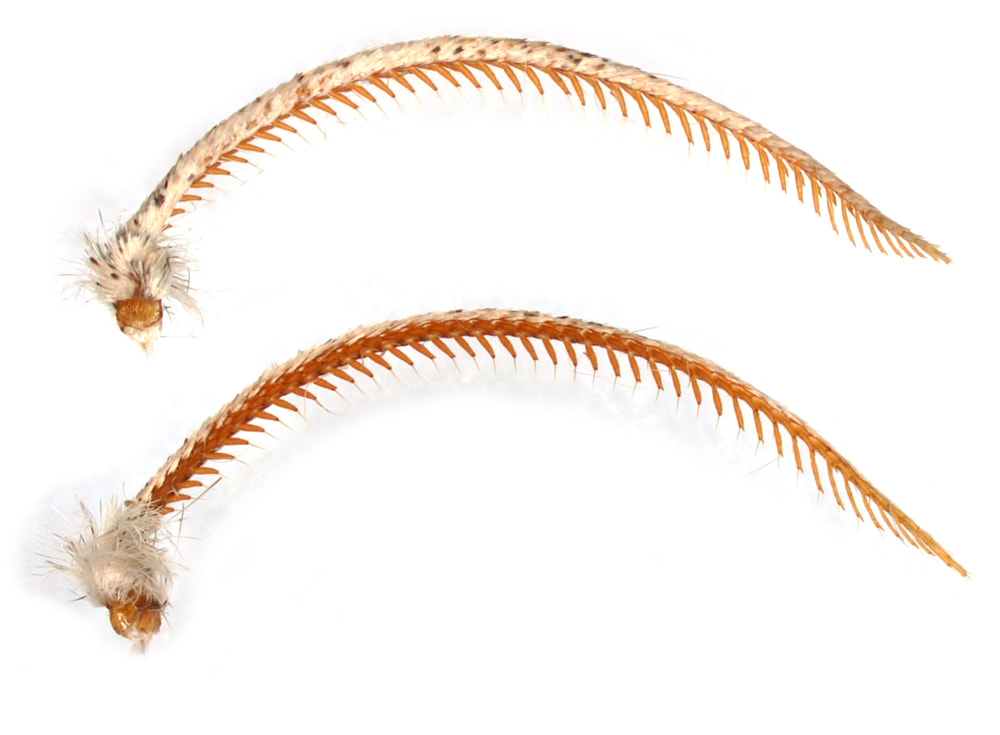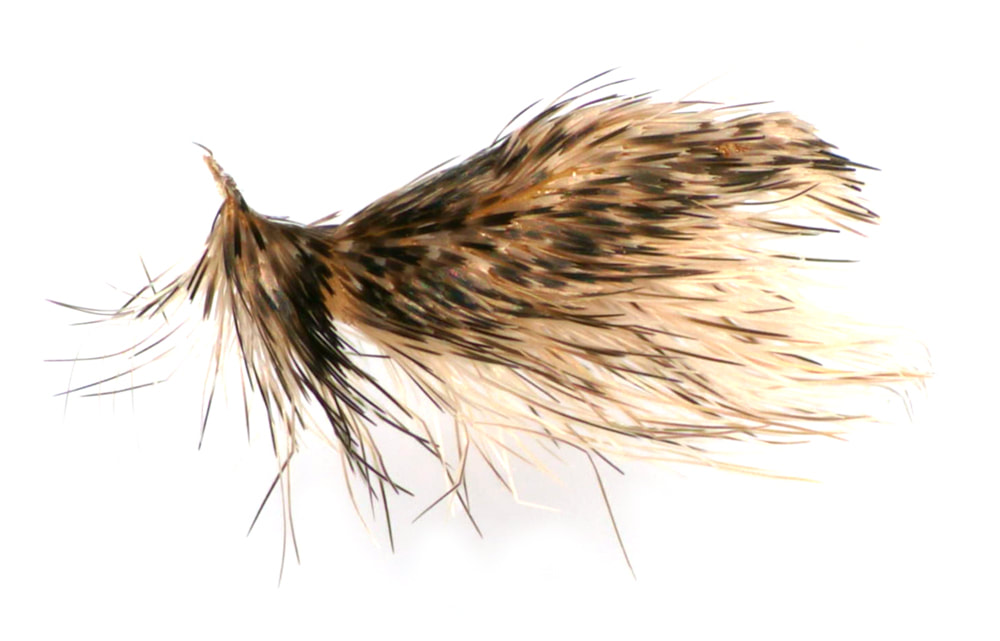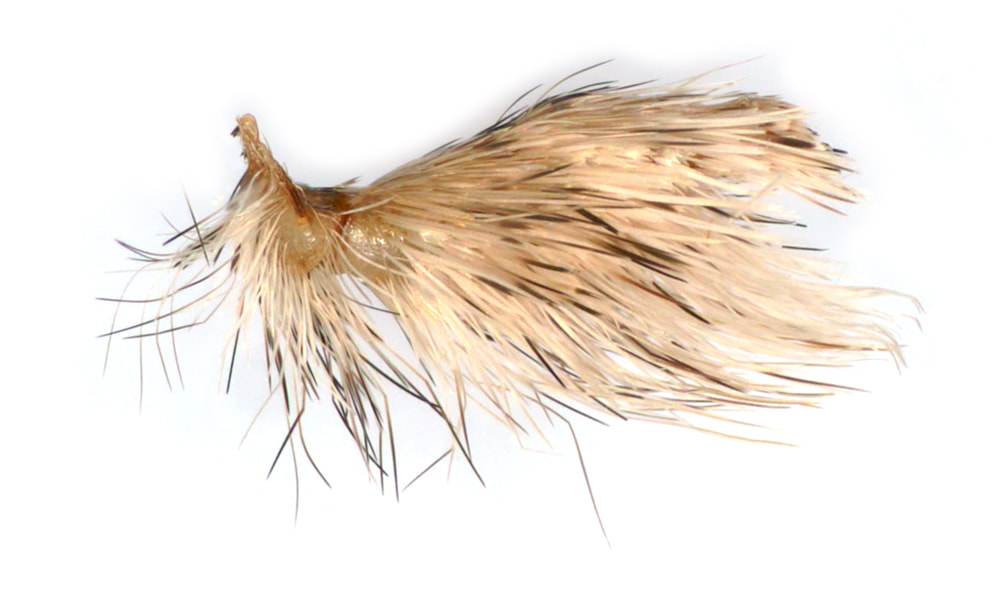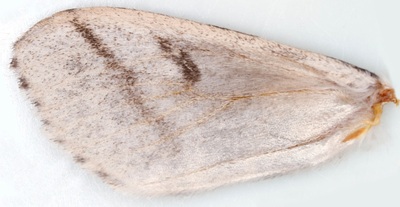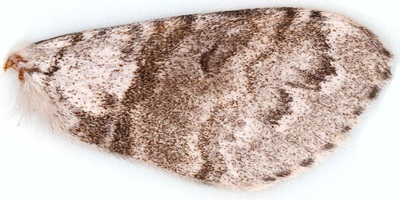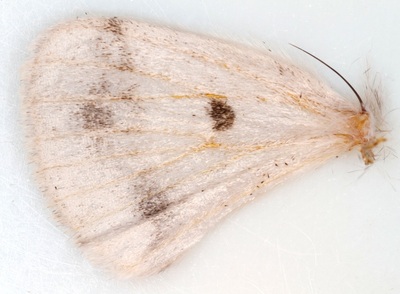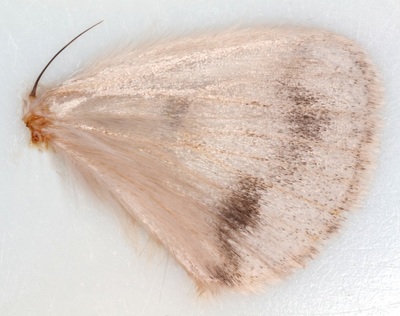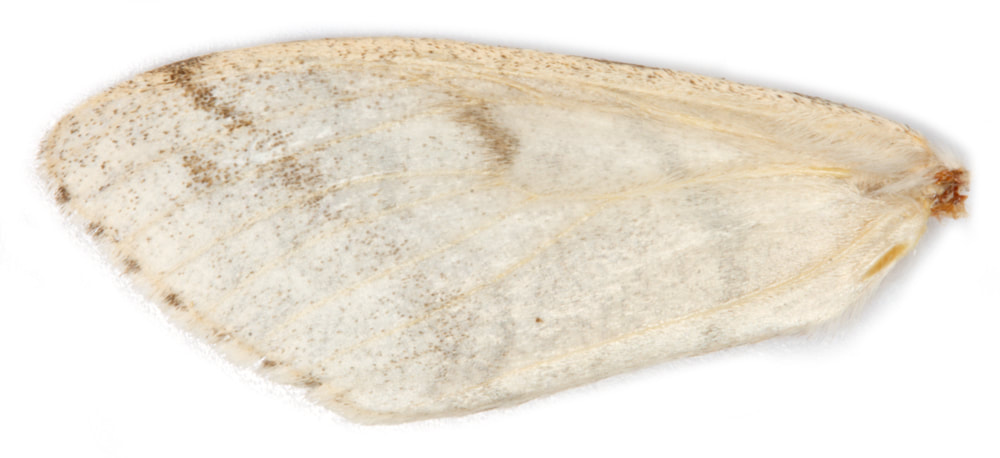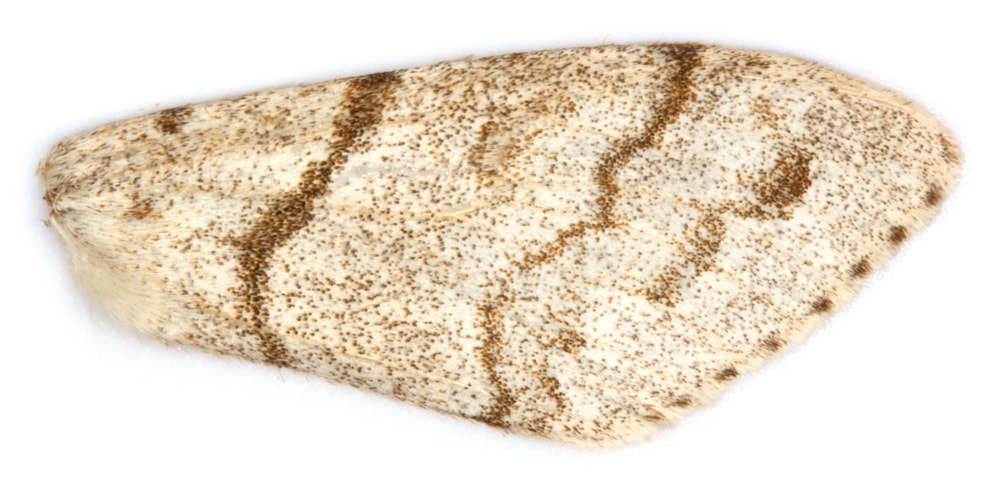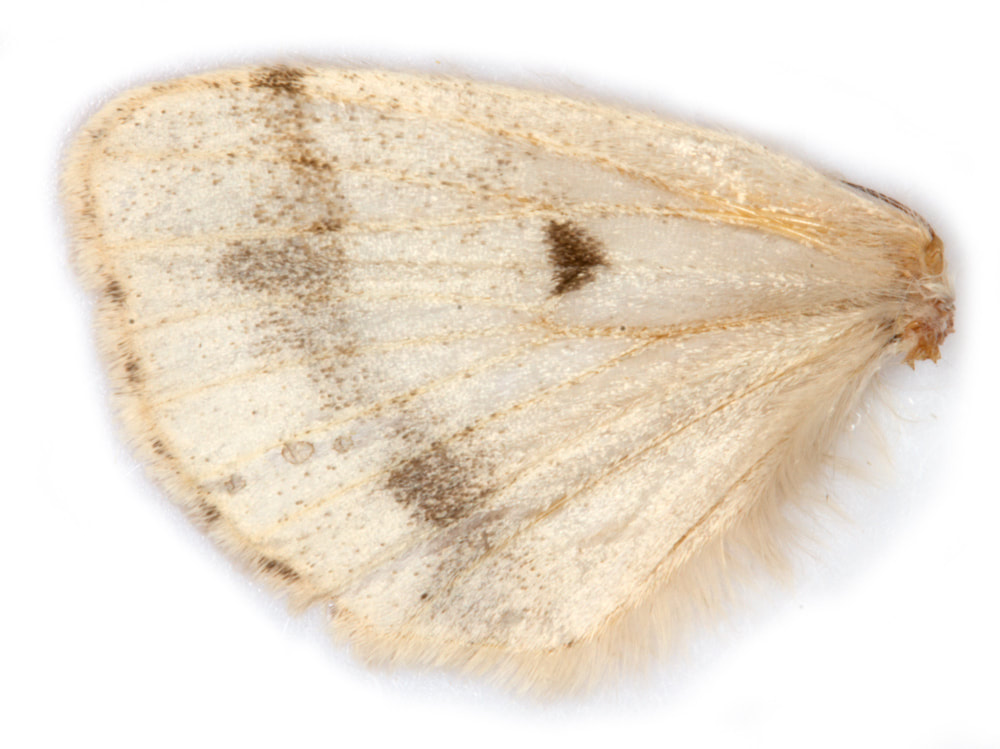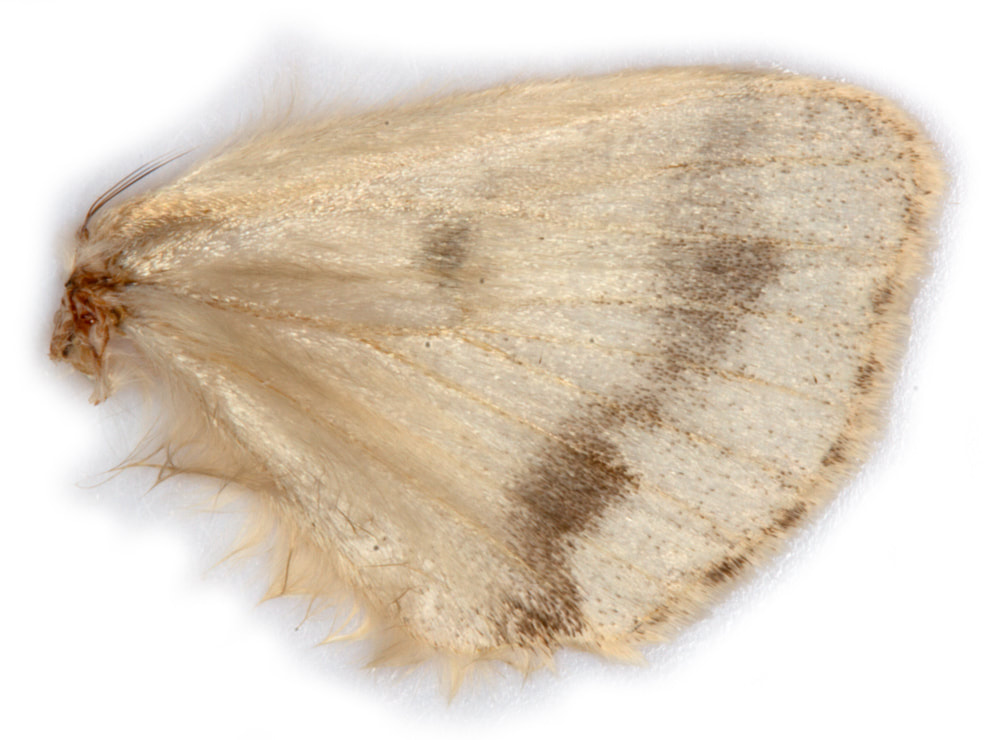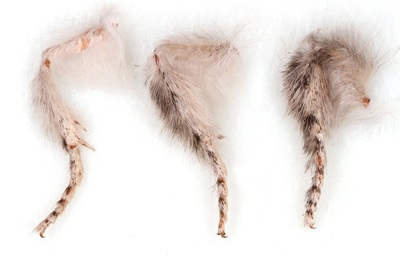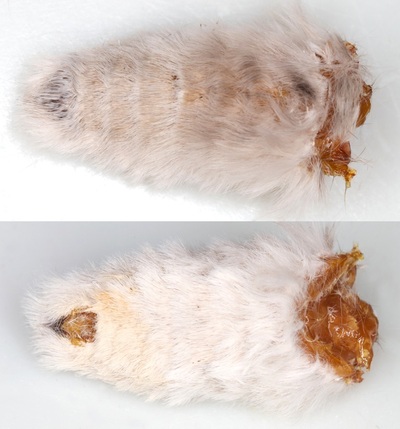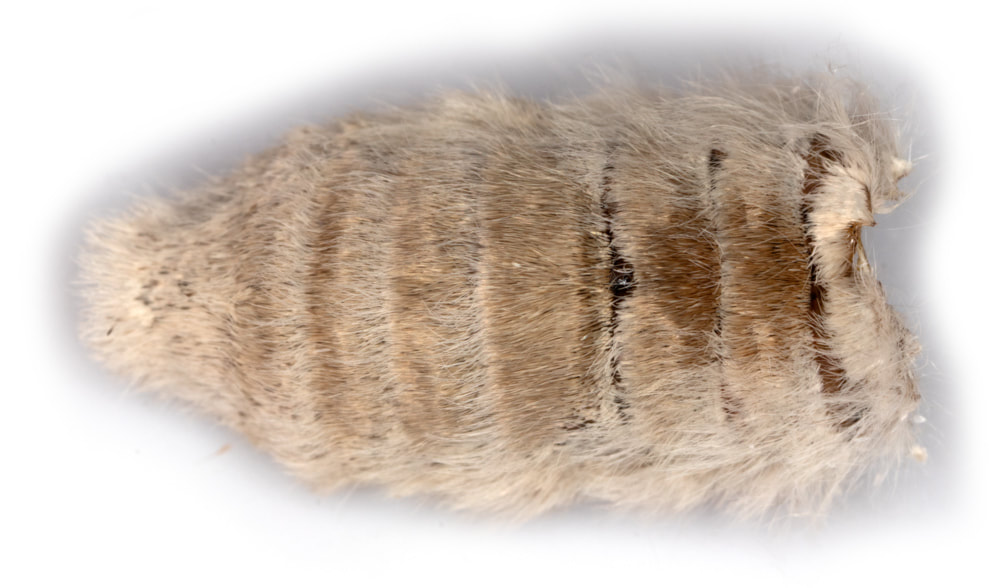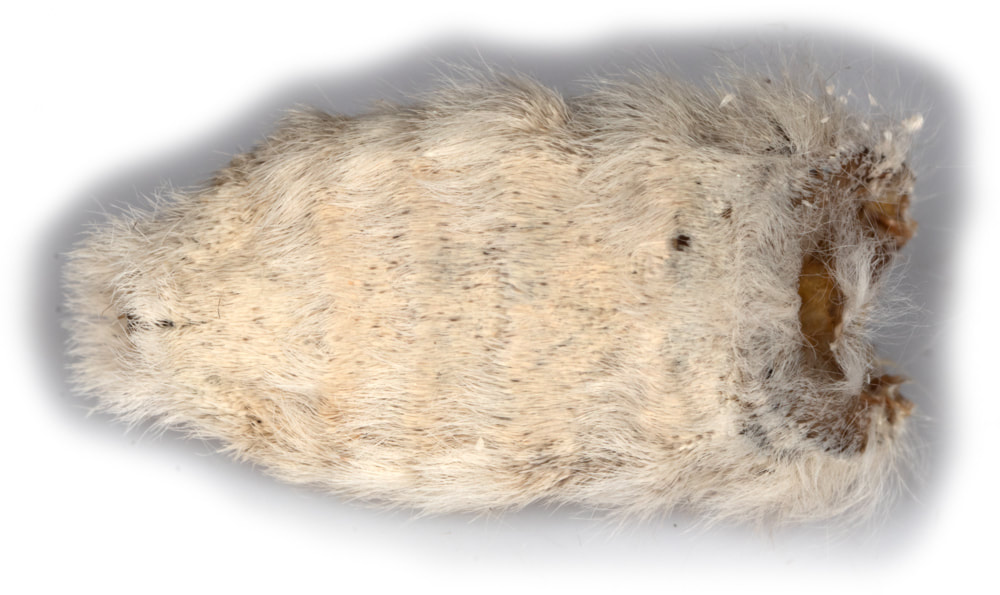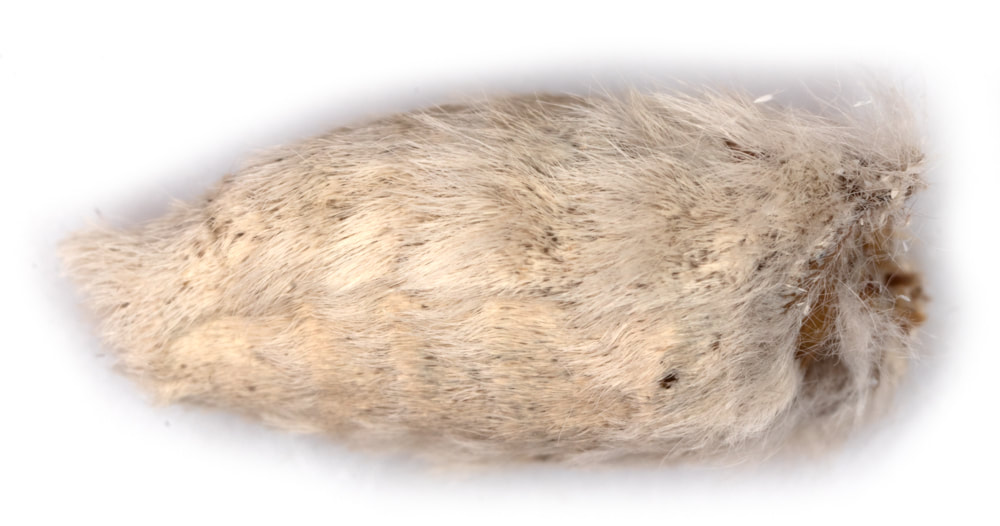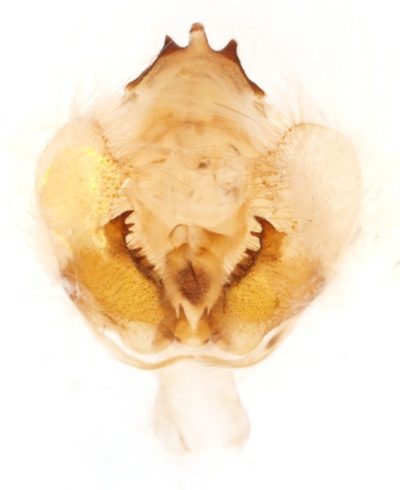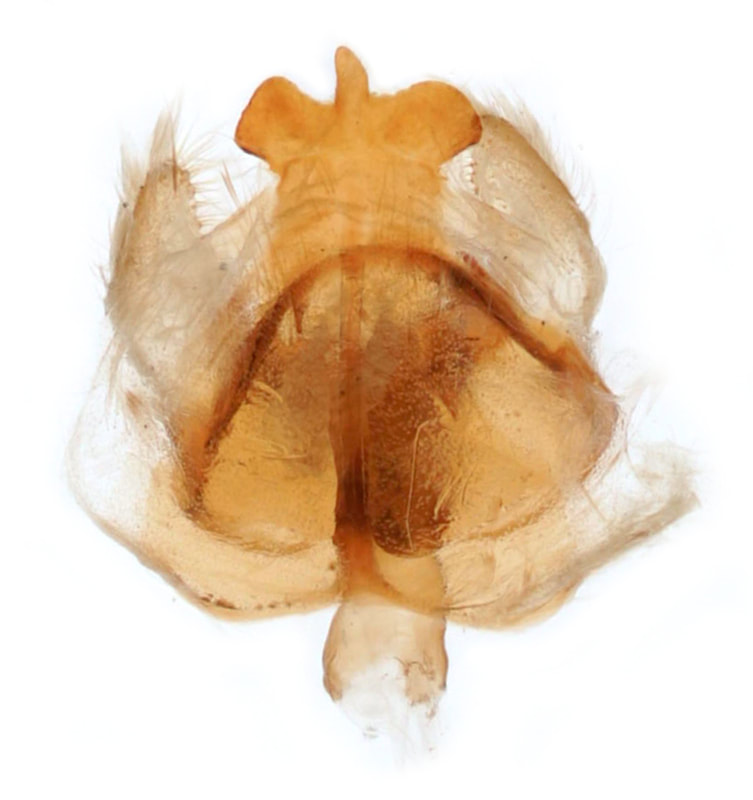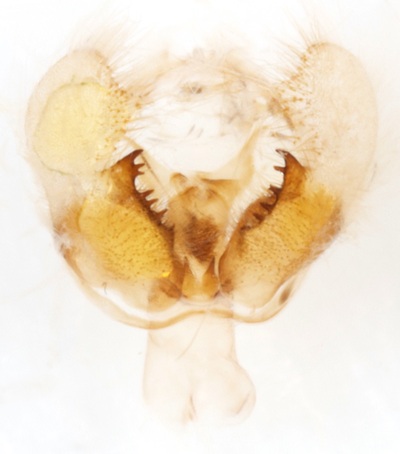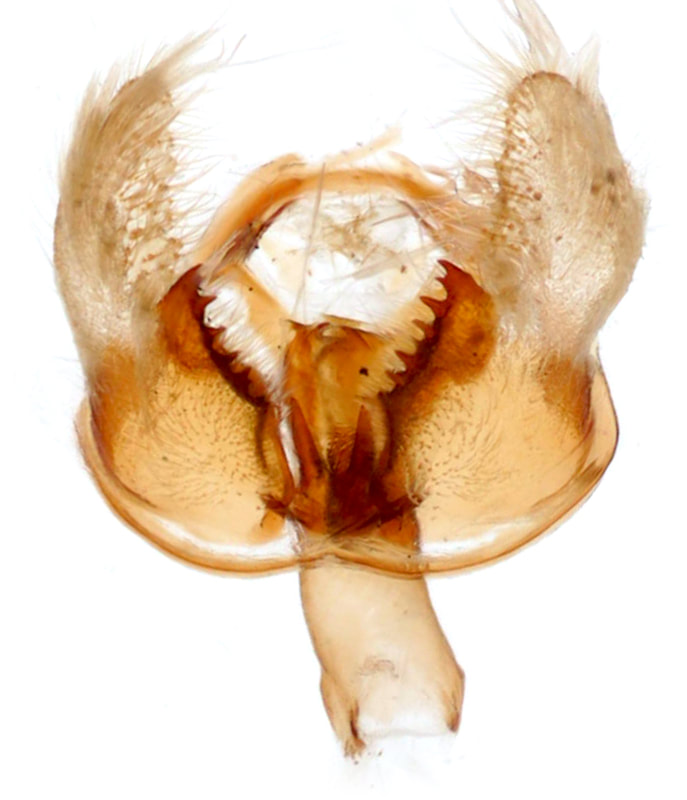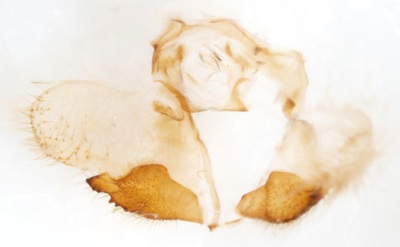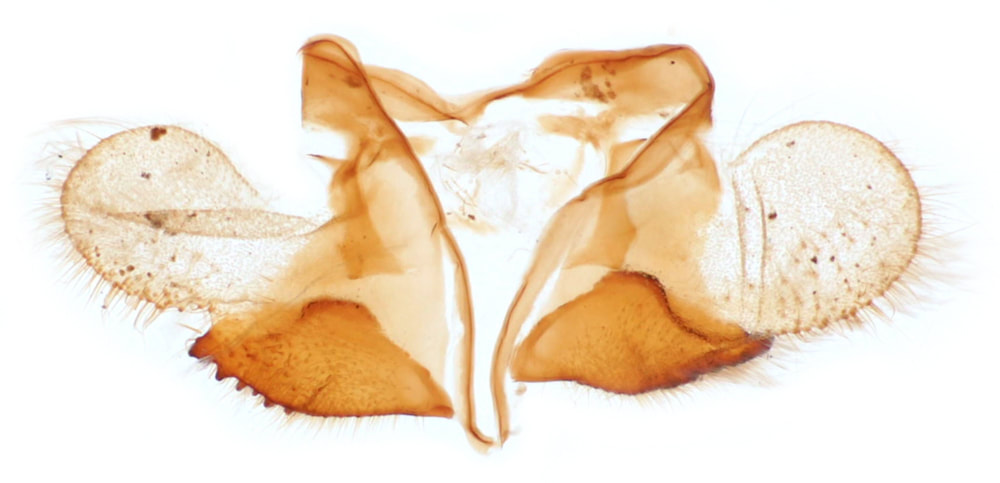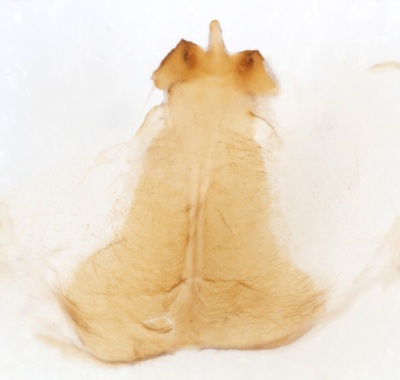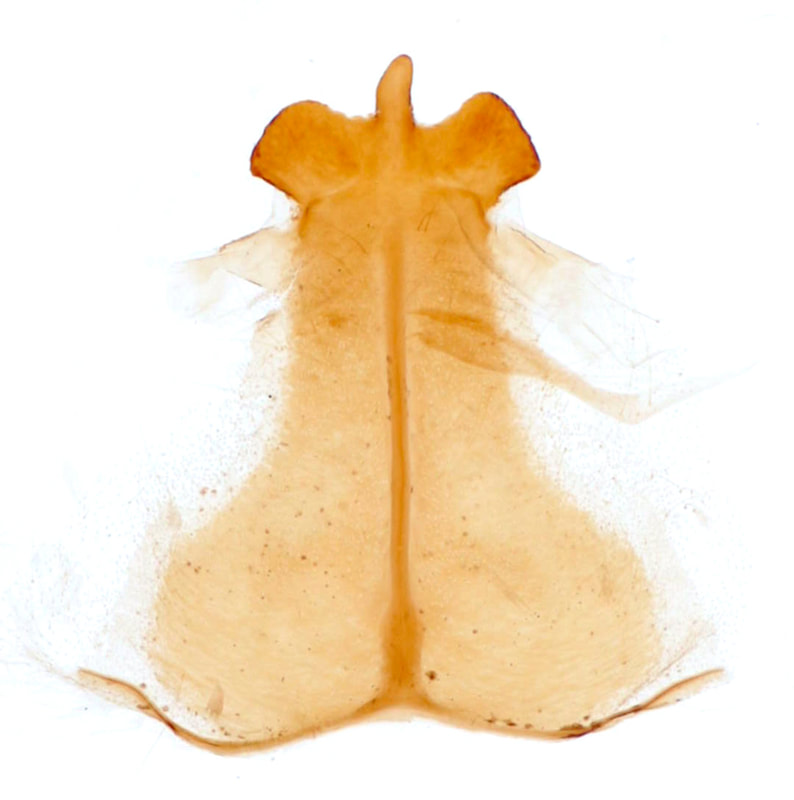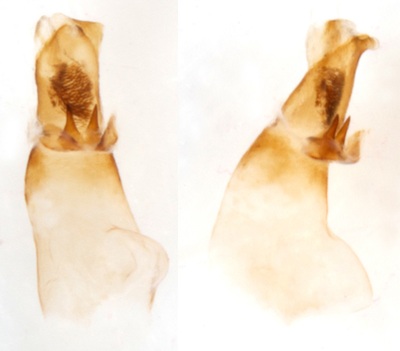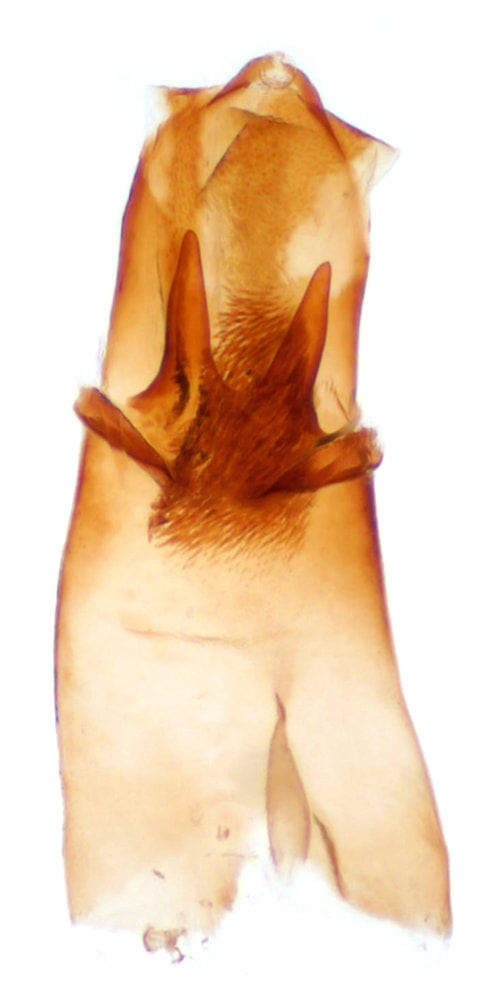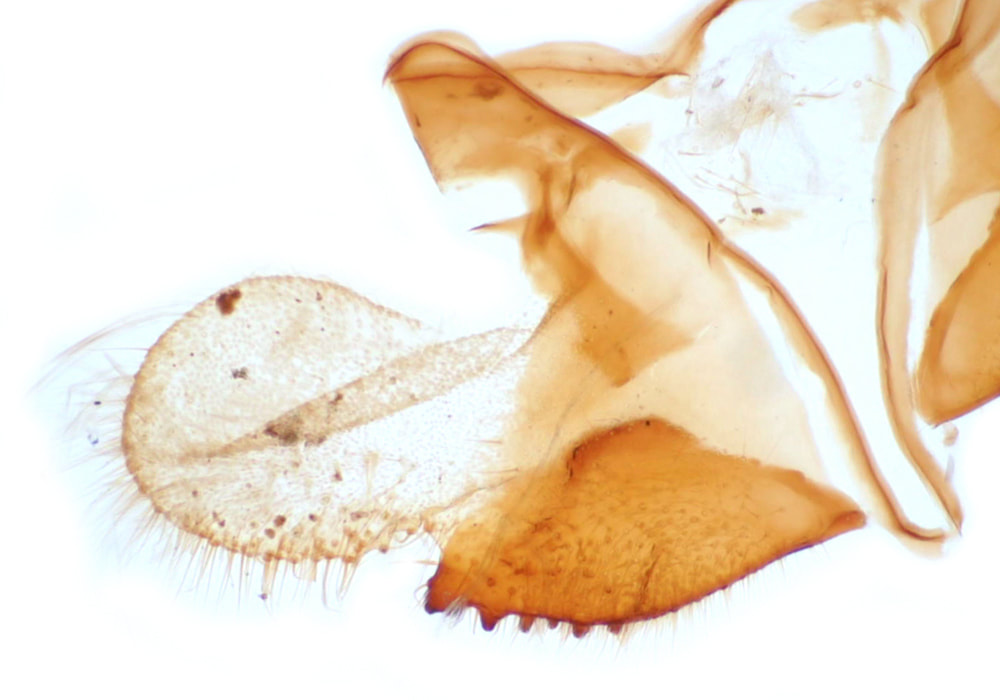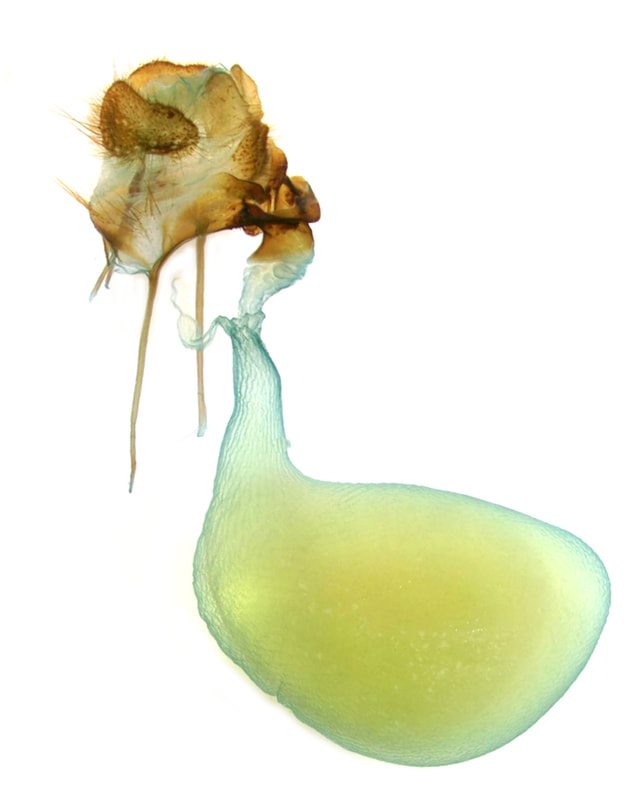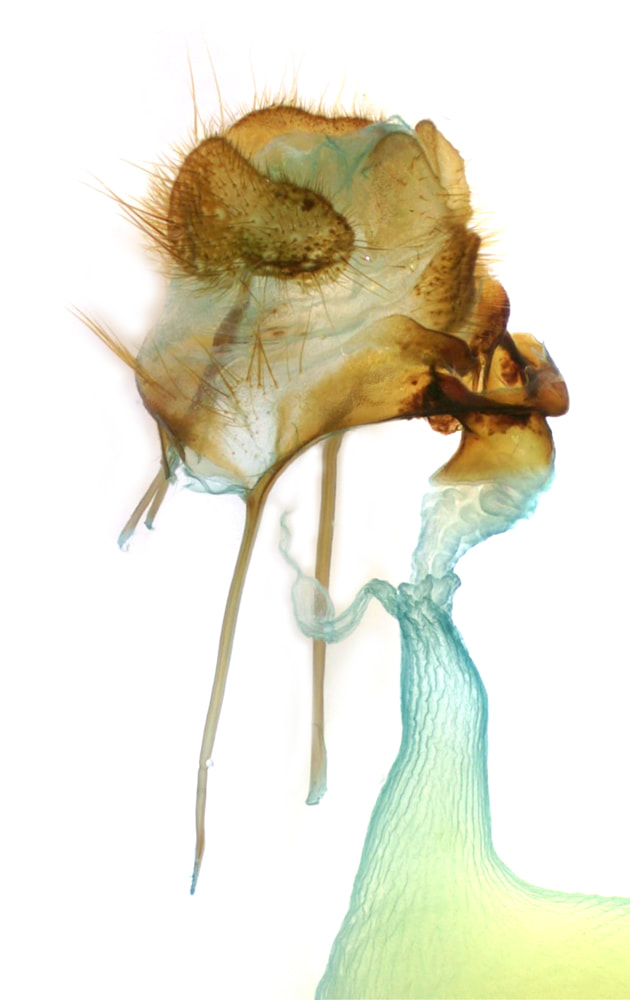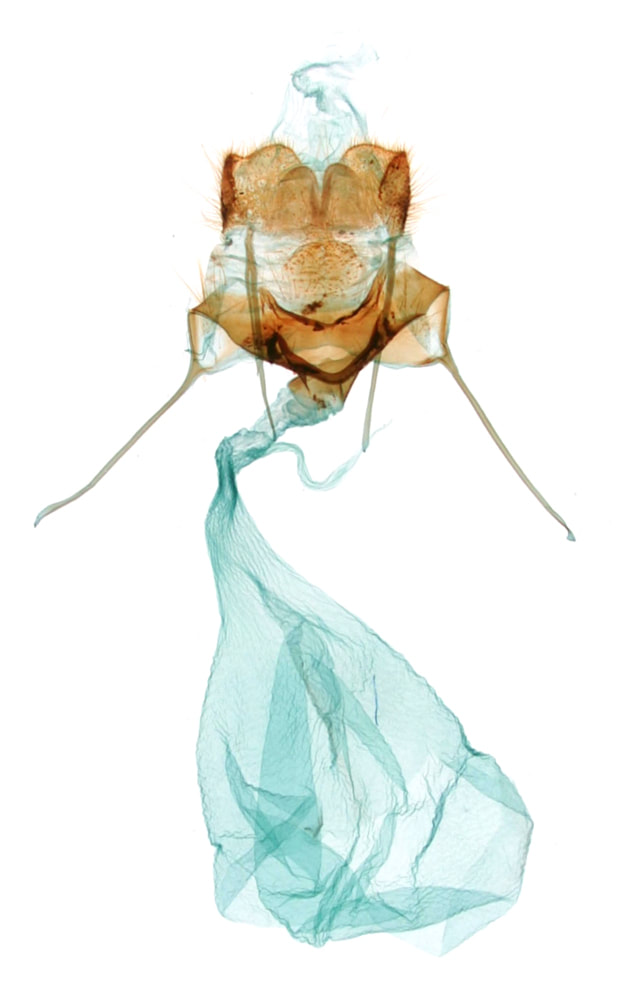72.015 Calliteara pudibunda (Pale Tussock)
fw: m21-22mm f27-31mm; May-Jun; many broad-leaved trees and shrubs; common in England & Wales
Synonym: Dasychira pudibunda (MBGBI9, Pierce 1941)
Synonym: Dasychira pudibunda (MBGBI9, Pierce 1941)
ID: Both C.pudibunda and Dicallomera fascelina (Dark Tussock) have a characteristic resting posture with the hairy forelegs stretched out in front of the head; both have strongly bipectinate antennae in the male, shortly bipectinate in the female and in both the female is larger and paler than the male. D.fascelina flies Jul-Aug and is largely confined to heath, moor and coastal shingle; it usually shows some orange blotches in the cross-lines and the male has grey antennae. In C.pudibunda the cross-lines lack orange; in the male the median fascia is contrastingly dark and the antennae are orange-brown. Melanism is fairly common in the male, less so in the female.
Male genitalia: Note that the dorsal plate of S8 is modified to take on the appearance, and presumably the functions of a trifurcate (pseud)uncus. Pierce refers to this as an uncus but it does not arise from the tegumen. Pierce also comments that the costa is "fused centrally, forming a fork of two arms; this fork must not be confused with the anellus" - however it looks very much like a juxta/anellus to me.
Male genitalia: Note that the dorsal plate of S8 is modified to take on the appearance, and presumably the functions of a trifurcate (pseud)uncus. Pierce refers to this as an uncus but it does not arise from the tegumen. Pierce also comments that the costa is "fused centrally, forming a fork of two arms; this fork must not be confused with the anellus" - however it looks very much like a juxta/anellus to me.
§1 Foulness, Essex; 01/06/2008; male; fw 23.3mm
§2 Cyffdy Farm, Gwynedd; 24/06/2010; male
§3 Strumpshaw Fen, Norfolk; 29/05/2012; male
§4 Hockley woods, Essex; 06/05/2014; male
§5 New Forest, Hampshire; 30/05/2014; male
§6 St Lawrence, isle of Wight; 31/05/2014; female
§7 Orlestone Forest, Kent; 04/06/2019; female; fw 29.0mm
§8 Pound Wood, Esex; 23/05/2019; male; fw 22.0mm
All images © Chris Lewis
§2 Cyffdy Farm, Gwynedd; 24/06/2010; male
§3 Strumpshaw Fen, Norfolk; 29/05/2012; male
§4 Hockley woods, Essex; 06/05/2014; male
§5 New Forest, Hampshire; 30/05/2014; male
§6 St Lawrence, isle of Wight; 31/05/2014; female
§7 Orlestone Forest, Kent; 04/06/2019; female; fw 29.0mm
§8 Pound Wood, Esex; 23/05/2019; male; fw 22.0mm
All images © Chris Lewis
Page published 09/03/2015 (§1-6) | §7 added 21/01/2020 | §8 added 12/02/2020
